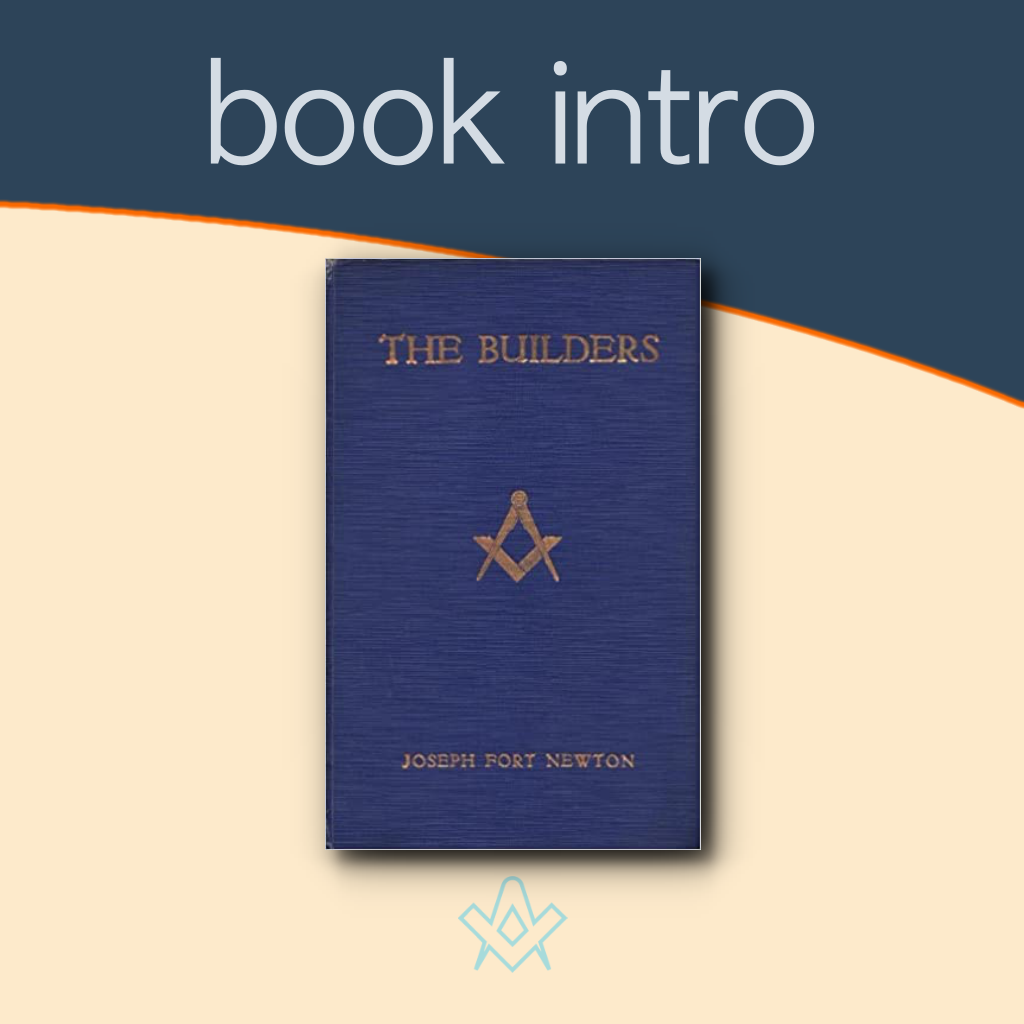This is a general survey of Masonic origins, history and philosophy. It was at one time given to every new Mason in Iowa, probably a better choice than Morals and Dogma, which is almost three times as long and much more difficult reading.
This is a scholarly but approachable treatment of Masonry and will be enlightening both to practicing Freemasons and a general audience.
Newton is a rationalist and deflates claims of an ancient origin for Masonry per se; rather he illuminates the historical precedents of the group.
He starts with ancient Egypt, not because he believes that the Egyptians had functioning Masonic lodges, but because that is where monumental architecture began.
He covers the ancient mystery religions, and the true origin of Masonry in organizations of medieval stone-masons.
After a period of decline, a London meeting held in 1717 at the Goose and Gridiron Alehouse united the remaining four Lodges of England, and started modern Freemasonry.
The two-tier organization proliferated into three, and then multiple degrees, during the 18th and 19th centuries, eventually resulting in modern Freemasonry.
Masonry, which had started as an underground association of building trade workers, evolved into a fraternal group which included both members of the English royal family and American revolutionaries.
Despite his rational stance, Newton is rhapsodic about the progressive influence of the Masonic movement and philosophy, both for individuals seeking ‘the lost word’, and for society as a whole.
Newton claims that the world has benefited greatly because of the Masonic ideals of liberty, fraternity and equality.
The Builders tells the Masonic side of this story.
THE ANTEROOM
Fourteen years ago the writer of this volume entered the temple of Freemasonry, and that date stands out in memory as one of the most significant days in his life.
There was a little spread on the night of his raising, and, as is the custom, the candidate was asked to give his impressions of the Order.
Among other things, he made request to know if there was any little book which would tell a young man the things he would most like to know about Masonry—what it was, whence it came, what it teaches, and what it is trying to do in the world?
No one knew of such a book at that time, nor has any been found to meet a need which many must have felt before and since.
By an odd coincidence, it has fallen to the lot of the author to write the little book for which he made request fourteen years ago.
This bit of reminiscence explains the purpose of the present volume, and every book must be judged by its spirit and purpose, not less than by its style and contents.
Written as a commission from the Grand Lodge of Iowa, and approved by that Grand body, a copy of this book is to be presented to every man upon whom the degree of Master Mason is conferred within this Grand Jurisdiction.
Naturally this intention has determined the method and arrangement of the book, as well as the matter it contains; its aim being to tell a young man entering the order the antecedents of Masonry, its development, its philosophy, its mission, and its ideal.
Keeping this purpose always in mind, the effort has been to prepare a brief, simple, and vivid account of the origin, growth, and teaching of the Order, so written as to provoke a deeper interest in and a more earnest study of its story and its service to mankind.
No work of this kind has been undertaken, so far as is known, by any Grand Lodge in this country or abroad—at least, not since the old Pocket Companion, and other such works in the earlier times; and this is the more strange from the fact that the need of it is so obvious, and its possibilities so fruitful and important.
Everyone who has looked into the vast literature of Masonry must often have felt the need of a concise, compact, yet comprehensive survey to clear the path and light the way.
Especially must those feel such a need who are not accustomed to traverse long and involved periods of history, and more especially those who have neither the time nor the opportunity to sift ponderous volumes to find out the facts.
Much of our literature—indeed, by far the larger part of it—was written before the methods of scientific study had arrived, and while it fascinates, it does not convince those who are used to the more critical habits of research.
Consequently, without knowing it, some of our most earnest Masonic writers have made the Order a target for ridicule by their extravagant claims as to its antiquity.
They did not make it clear in what sense it is ancient, and not a little satire has been aimed at Masons for their gullibility in accepting as true the wildest and most absurd legends.
Besides, no history of Masonry has been written in recent years, and some important material has come to light in the world of historical and archaeological scholarship, making not a little that has hitherto been obscure more clear; and there is need that this new knowledge be related to what was already known.
While modern research aims at accuracy, too often its results are dry pages of fact, devoid of literary beauty and spiritual appeal—a skeleton without the warm robe of flesh and blood.
Striving for accuracy, the writer has sought to avoid making a dusty chronicle of facts and figures, which few would have the heart to follow, with what success the reader must decide.
Such a book is not easy to write, and for two reasons: it is the history of a secret Order, much of whose lore is not to be written, and it covers a bewildering stretch of time, asking that the contents of innumerable volumes—many of them huge, disjointed, and difficult to digest—be compact within a small space.
Nevertheless, if it has required a prodigious labor, it is assuredly worthwhile in behalf of the young men who throng our temple gates, as well as for those who are to come after us.
Every line of this book has been written in the conviction that the real history of Masonry is great enough, and its simple teaching grand enough, without the embellishment of legend, much less of occultism.
It proceeds from first to last upon the assurance that all that we need to do is to remove the scaffolding from the historic temple of Masonry and let it stand out in the sunlight, where all men can see its beauty and symmetry, and that it will command the respect of the most critical and searching intellects, as well as the homage of all who love mankind.
By this faith the long study has been guided; in this confidence it has been completed.
To this end the sources of Masonic scholarship, stored in the library of the Grand Lodge of Iowa, have been explored, and the highest authorities have been cited wherever there is uncertainty—copious references serving not only to substantiate the statements made, but also, it is hoped, to guide the reader into further and more detailed research.
Also, in respect of issues still open to debate and about which differences of opinion obtain, both sides have been given a hearing, so far as space would allow, that the student may weigh and decide the question for himself.
Like all Masonic students of recent times, the writer is richly indebted to the great Research Lodges of England—especially to the Quatuor Coronati Lodge, No. 2076—without whose proceedings this study would have been much harder to write, if indeed it could have been written at all.
Such men as Gould, Hughan, Speth, Crawley, Thorp, to name but a few—not forgetting Pike, Parvin, Mackey, Fort, and others in this country—deserve the perpetual gratitude of the fraternity.
If, at times, in seeking to escape from mere legend, some of them seemed to go too far toward another extreme—forgetting that there is much in Masonry that cannot be traced by name and date—it was but natural in their effort in behalf of authentic history and accurate scholarship.
Alas, most of those named belong now to a time that is gone and to the people who are no longer with us here, but they are recalled by an humble student who would pay them the honor belonging to great men and great Masons.
This book is divided into three parts, as everything Masonic should be: Prophecy, History, and Interpretation.
The first part has to do with the hints and foregleams of Masonry in the early history, tradition, mythology, and symbolism of the race—finding its foundations in the nature and need of man, and showing how the stones wrought out by time and struggle were brought from afar to the making of Masonry as we know it.
The second part is a story of the order of builders through the centuries, from the building of the Temple of Solomon to the organization of the mother Grand Lodge of England, and the spread of the Order all over the civilized world.
The third part is a statement and exposition of the faith of Masonry, its philosophy, its religious meaning, its genius, and its ministry to the individual, and through the individual to society and the state.
Such is a bare outline of the purpose, method, plan, and spirit of the work, and if these be kept in mind it is believed that it will tell its story and confide its message.
When a man thinks of our mortal lot—its greatness and its pathos, how much has been wrought out in the past, and how binding is our obligation to preserve and enrich the inheritance of humanity—there comes over him a strange warming of the heart toward all his fellow workers; and especially toward the young, to whom we must soon entrust all that we hold sacred.
All through these pages the wish has been to make the young Mason feel in what a great and benign tradition he stands, that he may the more earnestly strive to be a Mason not merely in form, but in faith, in spirit, and still more, in character; and so help to realize somewhat of the beauty we all have dreamed—lifting into the light the latent powers and unguessed possibilities of this the greatest order of men upon the earth.
Everyone can do a little, and if each does his part faithfully the sum of our labors will be very great, and we shall leave the world fairer than we found it, richer in faith, gentler in justice, wiser in pity—for we pass this way but once, pilgrims seeking a country, even a City that hath foundations.
J. F. N.
Cedar Rapids, Iowa, September 7, 1914.
About the author

Joseph Fort Newton (1880–1950) was an American Baptist minister.
Newton received the third degree of Freemasonry on May 28, 1902 in Friendship Lodge No. 7, Dixon, Illinois, later affiliating with Mt. Hermon Lodge No. 253, Cedar Rapids, Iowa.
He also served as Grand Chaplain of the Grand Lodge of Iowa from 1911 to 1913, and Grand Prelate of the Grand Encampment of Knights Templar.
The Builders has been called “an outstanding classic in Masonic literature offering the early history of Freemasonry.”
Rev. Newton authored over 30 books, perhaps his most famous being The Builders: A Story and Study of Freemasonry, published in 1914, and translated into six different languages.
The Builders is still regarded as one of the best books on the topic. The Men’s House was published in 1923, and his autobiography, River of Years, in 1944.
Article by: Joseph Fort Newton
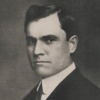
Rev. Newton (1880–1950) , was an American Baptist minister, authored a number of masonic books, including his best-known works, The Builders, published in 1914, and The Men’s House, published in 1923.
He received the third degree of Freemasonry on May 28, 1902 in Friendship Lodge No. 7, Dixon, Illinois, later affiliating with Mt. Hermon Lodge No. 263, Cedar Rapids, Iowa.
He also served as Grand Chaplain of the Grand Lodge of Iowa from 1911 to 1913 and Grand Prelate of the Grand Encampment of Knights Templar.
The Builders has been called "an outstanding classic in Masonic literature offering the early history of Freemasonry."

The Builders
By: Joseph Fort Newton
This anthology is a thorough introduction to classic literature for those who have not yet experienced these literary masterworks.
For those who have known and loved these works in the past, this is an invitation to reunite with old friends in a fresh new format.
From Shakespeare s finesse to Oscar Wilde s wit, this unique collection brings together works as diverse and influential as The Pilgrim s Progress and Othello.
As an anthology that invites readers to immerse themselves in the masterpieces of the literary giants, it is must-have addition to any library.
Recent Articles: in this series
 Book Intro: The Secret Doctrine Explore the profound synthesis of science, religion, and philosophy in H.P. Blavatsky's "The Secret Doctrine." Discover the true depth of Theosophy beyond the oversimplified term "Esoteric Buddhism" and uncover the universal wisdom that transcends religious boundaries. A compelling introduction to Theosophical literature and its broader, esoteric truths. |
 Book Intro - The craftsman and freemason's guide Dive into the enigmatic world of Freemasonry with Cornelius Moore's comprehensive guide. Uncover the symbolic rituals, trace the fraternity's historical roots, and gain a deeper understanding of this age-old society. Perfect for Freemasons and curious readers alike. Unlock the secrets of Freemasonry today! |
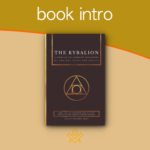 Unravel the secrets of the ancient Egyptian wisdom with our comprehensive guide to the Kybalion, by Three Initiates. Discover its influence on modern thought, the controversies surrounding it, and its seven profound Hermetic principles. Unlock the power of these timeless teachings to transform your understanding of life's mysteries. |
 Book Intro - The Working Tools of an Old York Master by Wilmshurst Unlock the Secrets of Freemasonry! Dive into the profound symbolism of 'The Working Tools of an Old York Master.' Discover the hidden meanings behind the square, compass, plumb line, and more. Embark on a transformative journey of personal growth and spiritual enlightenment. Uncover the ancient wisdom that has shaped generations of Masons. |
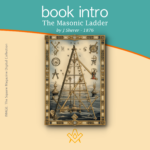 Book Intro - The Masonic Ladder by J Sherer Unlock the mysteries of Freemasonry with "The Masonic Ladder" by J. Sherer - - 1876. This 19th-century guidebook takes readers on a journey through the steps of the Masonic ladder, from the basic principles of the Entered Apprentice to the highest degree of the Sovereign Grand Inspector General. Discover the symbolism, allegory, and values of Freemasonry in this timeless classic. |
 Book Intro - The London mason in the seventeenth century The London Mason in the Seventeenth Century by Douglas Knoop offers a comprehensive examination of the lives and work of masons in the bustling city of London during the seventeenth century. The book delves into the intricacies of their craft, the socioeconomic and political forces that influenced their profession, and the role they played in shaping the architectural landscape of London. |
 Book Intro - History of Freemasonry, Gould, Robert Freke The History of Freemasonry is a comprehensive overview of the origins, development, and evolution of Freemasonry from its ancient roots to the modern era. The book explores the fascinating history of one of the oldest and most mysterious organisations in the world, which has been the subject of much speculation and curiosity over the centuries. - by Robert Freke Gould |
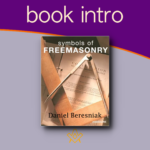 Book Intro - Daniel Beresniak Symbols Of Freemasonry This book is a collection of the symbolic images which Freemasons encounter on their journeys of transformation.' The texts and illustrations form an intimate dialogue whose subject is Freemasonry, and which casts light on the relationship between dreams and reality, reason, intuition and imagination. |
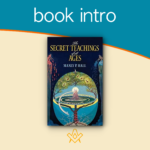 Book Intro - The Secret Teachings of All Ages by Manly P Hall The Secret Teachings of All Ages by Manly P Hall is a comprehensive and in-depth exploration of the various esoteric and occult traditions that have shaped human history. The book covers a wide range of subjects including alchemy, astrology, mysticism, and secret societies, and provides detailed explanations of the underlying principles and concepts. |
 Book Intro - Duncan's Masonic Ritual and Monitor Duncan's Masonic Ritual and Monitor is an impression of the Old York Rite published in New York in 1866. |
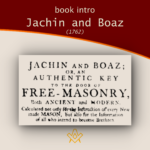 Book Intro - Jachin and Boaz (1762) Thirty two years after Samuel Prichard's Masonry Dissected (1730) a second detailed exposure was published Jachin and Boaz (1762) attributed to the same author, and met with equal distain by Freemasons of the time. However, these exposures offer the masonic historian an invaluable view in to how freemasonry was conducted during its early formation |
 Book Intro - Three Distinct Knocks (c.1760) Giving an exact account of all their proceedings in making a brother, with the three obligations or oaths belonging to the first second, and third degrees of masonry, viz. The entered apprentice, fellow-craft, and master-mason: with the obligating on belonging to the chair, and the grip and word. |
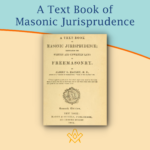 Book Intro - A Text Book of Masonic Jurisprudence An introduction to Albert Mackey's seminal work on Masonic Jurisprudence – the theory or philosophy of Masonic law. The Foundations of Masonic Law are to be found in the Landmarks, or Unwritten Law, and in the Ancient Constitutions, or the Written Law. These constitute the subject matter of the book. |
 Book Intro - The Perfect Ceremonies Of Craft Masonry 1871 A beautiful example of a the rituals, produced in a Medieval illuminated script style. Facsimiles still exist of this illustrated ritual book, of which the most authentically produced version is that available from the Scottish Rite Masonic Book Club. |
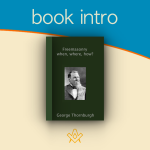 Book Intro – Freemasonry; when, where, how? Introduction to Freemasonry; when, where, how? By George Thornburgh |
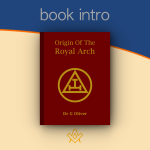 Book Intro - Origin Of The Royal Arch An introduction to the Origin of the Royal Arch, through the eyes of the English nineteenth century masonic author Dr G Oliver (1782–1867) |
 Book Intro – Symbolical Masonry Symbolical Masonry is a treasure-house of Masonic lore, including discussions of key concepts of the first three degrees, along with an extensive study guide. |
 This month we look at – 'A portrait gallery, with biographical sketches of prominent freemasons throughout the United States' |
 Extracted and abridged from The Mystic Tie: Or, Facts and Opinions, Illustrative of the Character and Tendency of Freemasonry By Albert Mackey, |
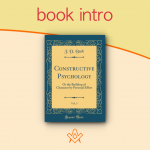 Book intro - Constructive Psychology The introduction to Constructive Psychology or The Building Of Character By Personal Effort by J D Buck a masonic author |
 book intro - Cagliostro: the splendour and misery of a master of magic Preface to the book by William Rutherford Hayes; Cagliostro: the splendour and misery of a master of magic |
 book intro - Origin of the Rosicrucians and the Free-Masons Historico-Critical Inquiry into the Origin of the Rosicrucians and the Free-Masons – Thomas De Quincey |
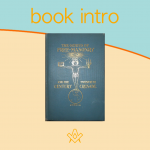 Book Intro - The Genius of Freemasonry The Genius of Freemasonry: “Has any brother anything to offer for the good of Masonry?” The following pages are the author’s answer to that question. |
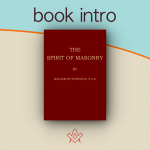 Book Intro - The Spirit of Masonry An essential source for anyone interested in exploring the inner mysteries of the Masonic Fraternity. |
 Book intro - History of Freemasonry Introduction to a classic masonic book by J. G. Findel, History of Freemasonry published 1866 |
 The Book of Constitutions for the Ancient Grand Lodge or Ahiman Rezon |
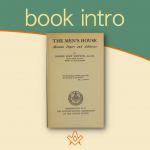 A short introduction to The Men's House, a collection of masonic papers and addresses |
 This is a general survey of Masonic origins, history and philosophy. It was at one time given to every new Mason in Iowa. |
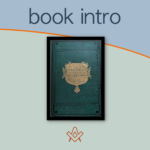 Book Intro - The Discrepancies of Freemasonry Written almost 150 years ago, this book contains wisdom still relevant today. |
 Book Intro - The Principles of Masonic Law "The first great duty, not only of every lodge, but of every Mason, is to see that the landmarks of the Order shall never be impaired". |
 Published in 1911, this fascinating book is equally relevant for the 21st century Mason with an interest in the more mystical side of Freemasonry. |
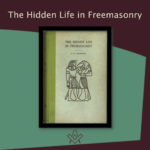 Book Intro - Hidden Life of Freemasonry Introduction to The Hidden Life in Freemasonry (1926) by Charles Webster Leadbeater |
 Book Intro - The Symbolism of Freemasonry Introduction to a classic masonic book; The Symbolism of Freemasonry: Illustrating and Explaining Its Science and Philosophy, its Legends, Myths and Symbols. |
 Book Intro - The Meaning of Masonry This is the Introduction to The Meaning of Masonry, a set of essays which discuss the esoteric side of Masonry |
 Book Intro - Illustrations of Masonry Introduction to Illustrations Of Masonry by William Preston (1742-1818) |
Recent Articles: The Builders by Joseph Fort Newton
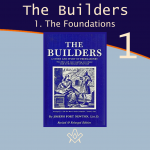 The Builders – 1 The Foundations Chapter 1. The Foundations Explore an outstanding classic in Masonic literature - an exposition of the early history and symbolism of Freemasonry – from the foundations upwards. |
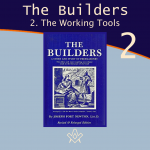 The Builders – 2 The Working Tools Chapter 2. The Working Tools - Explore an outstanding classic in Masonic literature - an exposition of the early history and symbolism of Freemasonry – from the foundations upwards. |
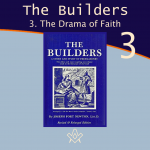 The Builders – 3 The Drama of Faith Chapter 3. The Drama of Faith - Explore an outstanding classic in Masonic literature - an exposition of the early history and symbolism of Freemasonry – from the foundations upwards. |
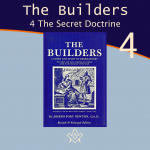 The Builders – 4 The Secret Doctrine Chapter 4. The Secret Doctrine - Explore an outstanding classic in Masonic literature - an exposition of the early history and symbolism of Freemasonry – from the foundations upwards. By Joseph Fort Newton |
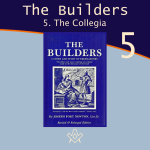 Chapter 5. The Collegia - If the laws of building were secrets known only to initiates, there must have been a secret Order of architects who built the temple of Solomon. Who were they? |
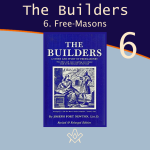 The Builders – 6 The Free-Masons Chapter 6. the Free-Masons - an examination into the history of the medieval guilds, their charges and regulations that form the base for the allegories and symbols in our modern versions of masonic craft ritual. By Joseph Fort Newton |
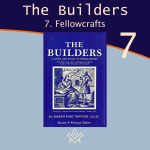 Chapter 7. the Fellowcrafts - an examination into the history of the medieval guilds, their charges and regulations that form the base for the allegories and symbols in our modern versions of masonic craft ritual. By Joseph Fort Newton |
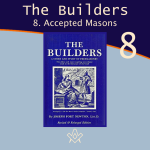 The Builders – 8 Accepted Masons Chapter 8. Accepted Masons - an examination into the history of accepted masons, and why did soldiers, scholars, antiquarians, clergymen, lawyers, and even the nobility ask to be accepted as members of the order of Free-masons? By Joseph Fort Newton |
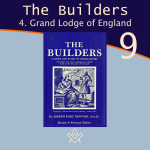 The Builders – 9 Grand Lodge of England Chapter 9. Grand Lodge of England - From every point of view, the organization of the Grand Lodge of England, in 1717, was a significant and far-reaching event. By Joseph Fort Newton |
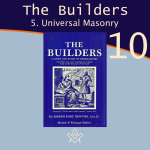 The Builders – 10 Universal Masonry Chapter 10. Universal Masonry - Henceforth, the Masons of England were no longer a society of handicraftsmen, but an association of men of all orders and every vocation, as also of almost every creed, |
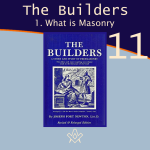 The Builders – 11 What is Masonry Chapter 11 "Masonry is the activity of closely united men who, employing symbolical forms borrowed principally from the mason's trade and from architecture, work for the welfare of mankind, striving morally to ennoble themselves and others, and thereby to bring about a universal league of mankind, which they aspire to exhibit even now on a small scale." |
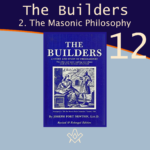 The Builders – 12 The Masonic Philosophy Chapter 12 When we look at Masonry in this large and mellow light, it is like a stately old cathedral, gray with age, rich in associations, its steps worn by innumerable feet of the living and the dead—not piteous, but strong and enduring. By Joseph Fort Newton |
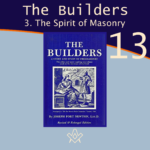 The Builders – 13 The Spirit of Masonry Chapter 13 Masonry is Friendship—friendship, first, with the great Companion, of whom our own hearts tell us, who is always nearer to us than we are to our-selves, and whose inspiration and help is the greatest fact of human experience. |
masonic knowledge
to be a better citizen of the world
share the square with two brothers

click image to open email app on mobile device


